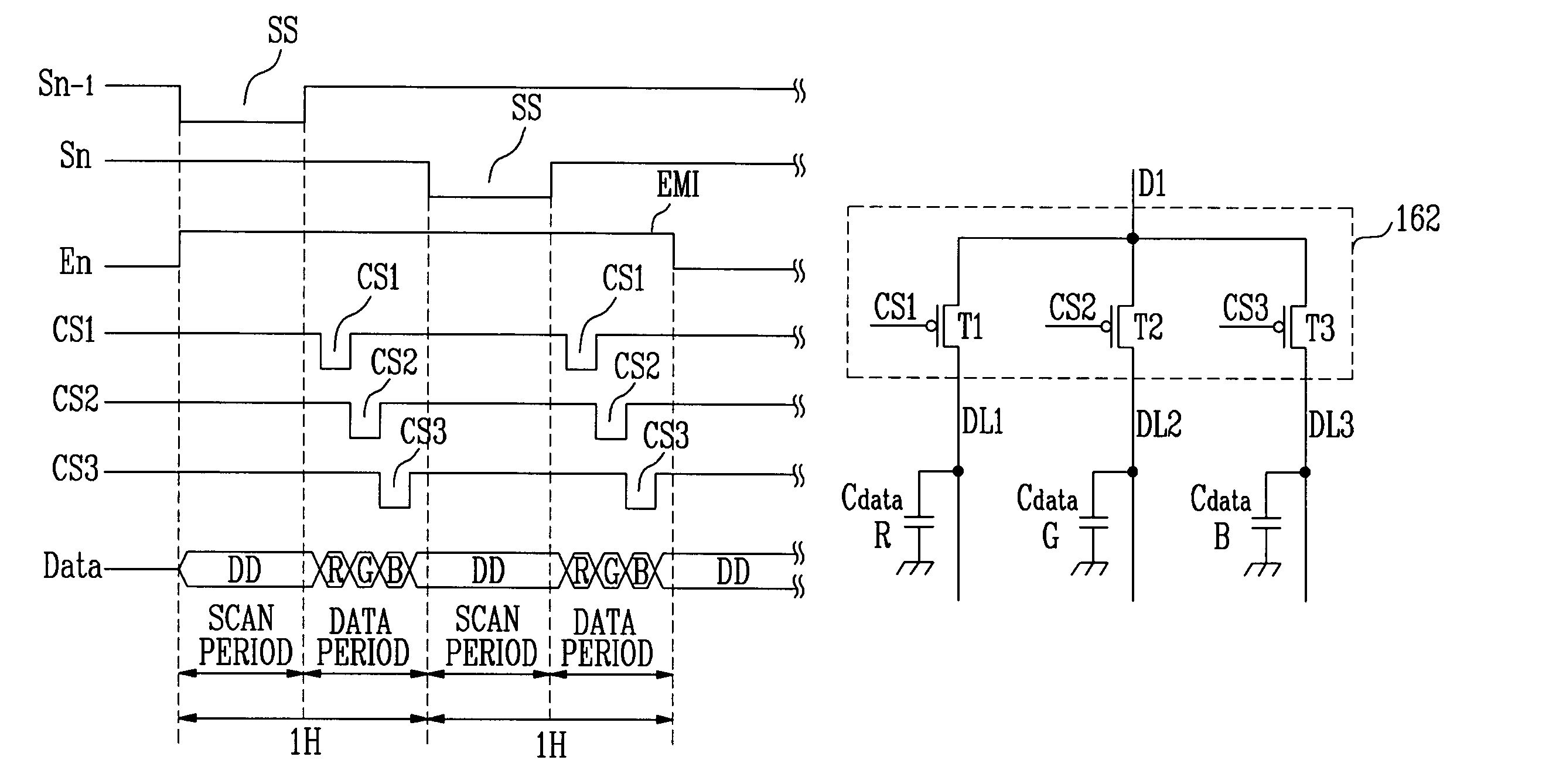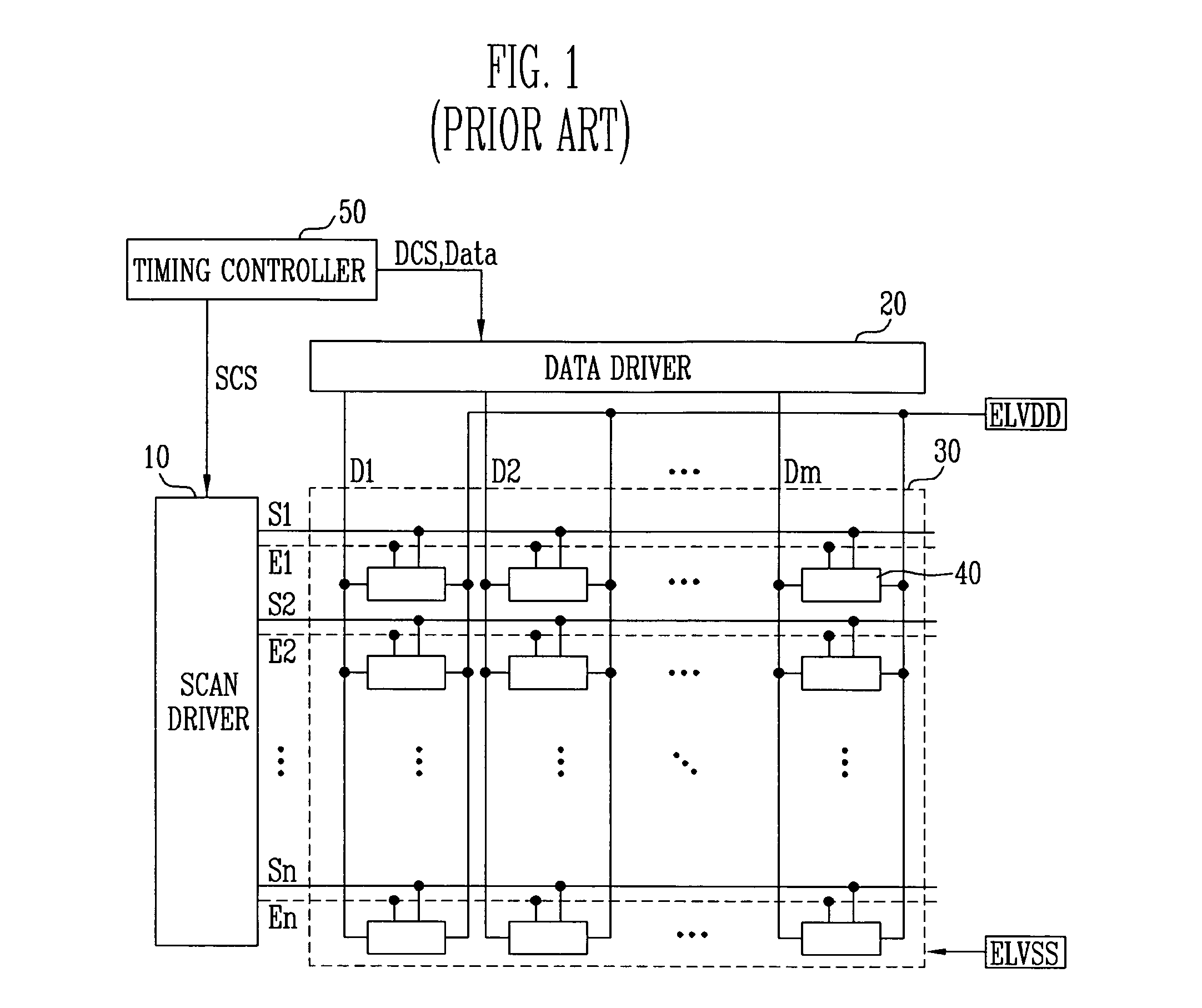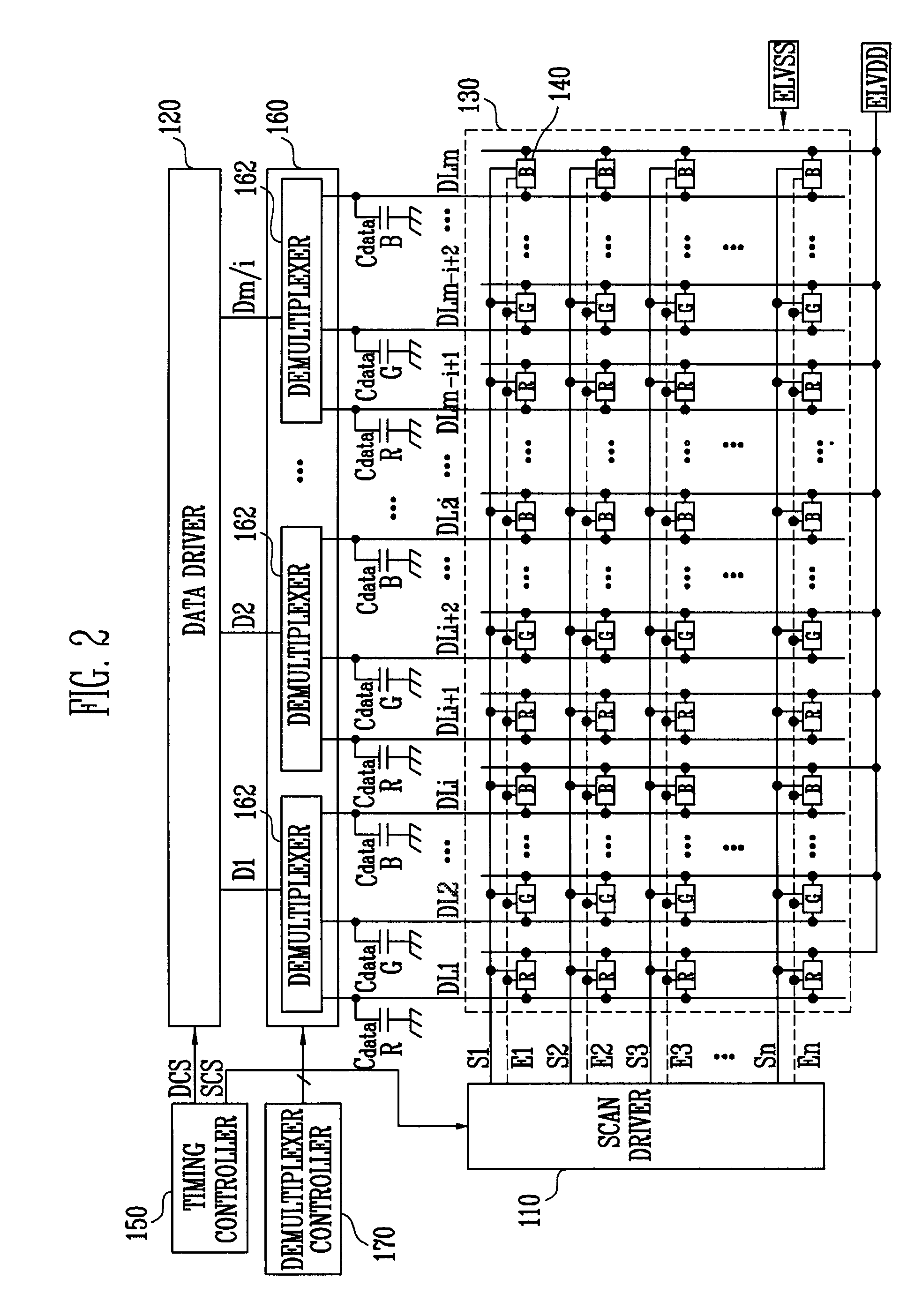Organic light emitting display utilizing parasitic capacitors for storing data signals
a parasitic capacitor and data signal technology, applied in static indicating devices, instruments, electroluminescent light sources, etc., can solve the problems of increased production cost of organic light emitting displays and display crt displays, and achieve uniform brightness and reduce the number of output lines of data drivers.
- Summary
- Abstract
- Description
- Claims
- Application Information
AI Technical Summary
Benefits of technology
Problems solved by technology
Method used
Image
Examples
first embodiment
[0073]FIG. 8 is an enlarged view showing a first embodiment Al of the portion A shown in FIG. 7. The second data lines DL are formed having the same line width, but different overlapping lengths with the first power source line 210 that result in different overlapping areas. Therefore, the consecutive second data lines DL have lengths that vary according to the location on the first power source line 210 where the second data line DL couples to the first power source line 210. The second power source lines DL becomes shorter as it goes from an edge portion of the first power source line 210 to a center portion. Thus, the overlapping areas between the first power source line 210 and the second data lines DL become smaller as the second data line DL goes from the 1st second data line DL1 to the (m / 2)th second data line DLm / 2. Likewise, the overlapping areas between the first power source line 210 and the second data lines DL become larger as the second data line DL goes from the (m / 2+...
second embodiment
[0075]FIG. 9 is an enlarged view showing a second embodiment A2 of the portion A shown in FIG. 7. The second data lines DL shown in this figure also have different overlapping area with the first power source line 210. In this embodiment, the width of the overlapping areas of the consecutive second data lines DL with the first power source line 210 varies from the edges of the first power source line 210 to its center. The second data lines DL become successively narrower from an edge portion of the first power source line 210 toward its center portion.
[0076]Due to this successive narrowing of the overlapping areas, the 1st second data line DL1 overlaps the first power source line 210 by a first width W1, and the 2nd second data line DL2 overlaps the first power source line 210 by a second width W2 narrower than the first width W1. Similarly, the mth second data line DLm overlaps the first power source line 210 by the first width W1, and the (m−1)th second data line DLm−1 overlaps t...
third embodiment
[0077]FIG. 10 is an enlarged view showing a third embodiment A3 of the portion A shown in FIG. 7. In this embodiment too, the second data lines DL have different capacitances that result from their different overlapping areas with the first power source line 210. As the figure shows, the second data lines DL are bent in S-shapes to have different lengths and therefore different overlapping areas with the first power source line 210.
[0078]The S-shaped curves of the second power source lines DL become shorter in consecutive lines from an edge portion of the first power source line 210 to a center portion. Thus, the overlapping areas between the first power source line 210 and the second data lines DL become smaller as the second data lines DL go from the 1st second data line DL1 to the (m / 2)th second data line DLm / 2. Similarly, the overlapping areas between the first power source line 210 and the second data lines DL become larger as the second data lines DL go from the (m / 2+1)th seco...
PUM
 Login to View More
Login to View More Abstract
Description
Claims
Application Information
 Login to View More
Login to View More - R&D
- Intellectual Property
- Life Sciences
- Materials
- Tech Scout
- Unparalleled Data Quality
- Higher Quality Content
- 60% Fewer Hallucinations
Browse by: Latest US Patents, China's latest patents, Technical Efficacy Thesaurus, Application Domain, Technology Topic, Popular Technical Reports.
© 2025 PatSnap. All rights reserved.Legal|Privacy policy|Modern Slavery Act Transparency Statement|Sitemap|About US| Contact US: help@patsnap.com



